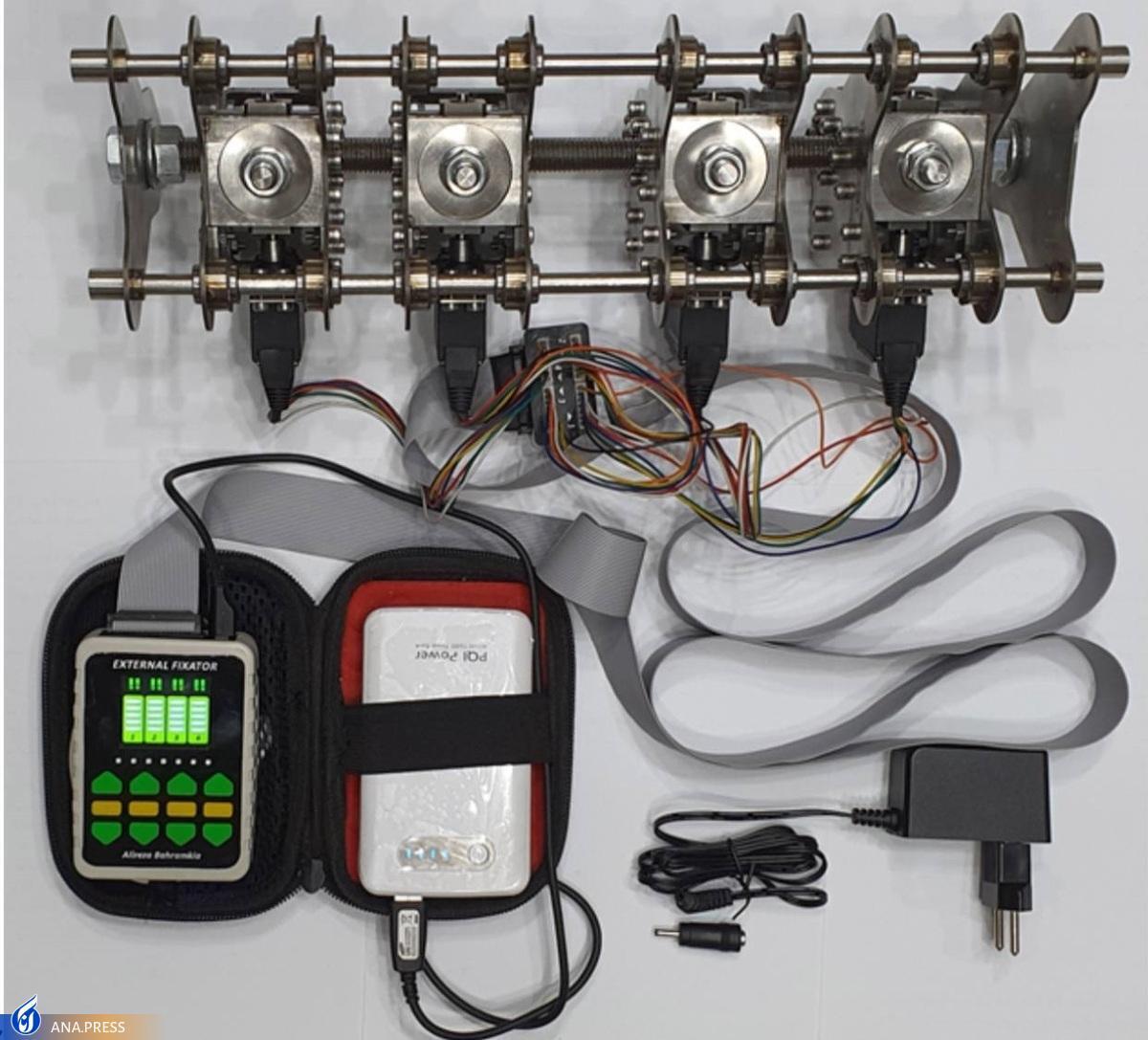Islamic Azad University Student Invents Device to Treat Fractures in Tibia

“This invention is a unilateral external bone fixator and its application is to treat patients who have fractured tibia and need to keep the fractured tibia bones stable,” Alireza Bahram Kia, a Ph.D. student of Mechanical Engineering at Islamic Azad University’s Lahijan branch, told ANA.
“Treatment of patients who have lost a part of their tibia due to an accident is also possible with this invention since moving the bones will be possible with the possibility of fixing and moving the bone(s) in a controlled and precise manner by having four independent units equipped with an engine based on the needs of the patient,” he added.
Bahram Kia noted that the engine used in the device facilitates its use, increases the speed of the operation and minimizes the problems caused by other methods compared to other unilateral external stabilizers that do not have an engine.
“All four driving parts of the device have movement which can move the bone pieces up or down without harming the patient based on the diagnosis of the specialist while other unilateral external fixators which lack an engine do not enjoy such features,” he said.
In a relevant development late last year, a group of Iranian researchers from Sharif University of Technology had also succeeded in developing a platform for designing and manufacturing customized titanium implants to replace bone.
“The remarkable thing about custom implant production is that each product is designed and manufactured specifically and based on the specifications of any patient, and therefore it is different from other products,” said Farzam Farahmand, a faculty member of the Mechanical Engineering Department of Sharif University of Technology.
He added that unlike the common mode of industrial production in which the product is standardized, in customized production, the product cannot be standardized, but the production process chain must be standardized.
“In this project, all stages of designing, manufacturing and finishing operations of customized titanium implants have been studied, modeled, analyzed and tested,” Farahmand said, adding that the production process chain includes conceptual and detailed design, manufacturing based on the SLM method, completion of surface and thermal operations and final processing like washing and sterilization, and all these stages have been optimized, standardized and documented.
“Customized bone replacement implants have wide applications in various types of surgery, specially maxillofacial surgery and orthopedic surgery. The platform developed in this project is capable of designing and production of different types of these implants, including articular and non-articular implants, cemented and non-cemented implants (direct connection of implant and bone), solid and porous implants, and implants bearing small, medium (such as bite force) and large mechanical loads (such as weight force) optimally and standardly,” he underlined.
4155/v





















